Nestled gracefully at the edge of a reflective pond in northern Kyoto, Kinkaku-ji—the Golden Pavilion—shimmers like a vision drawn from a fairytale. For centuries, this dazzling shrine has captured the wonder of visitors from around the globe, its gold-leaf façade glinting amid tranquil gardens. Yet the shine of Kinkaku-ji is not just visual—it’s woven from centuries of stories, powerful symbolism, and enduring resilience. Why does the Golden Pavilion shine so brightly, both in spirit and in stone? Let’s discover the mesmerizing tales behind one of Japan’s most beloved treasures.
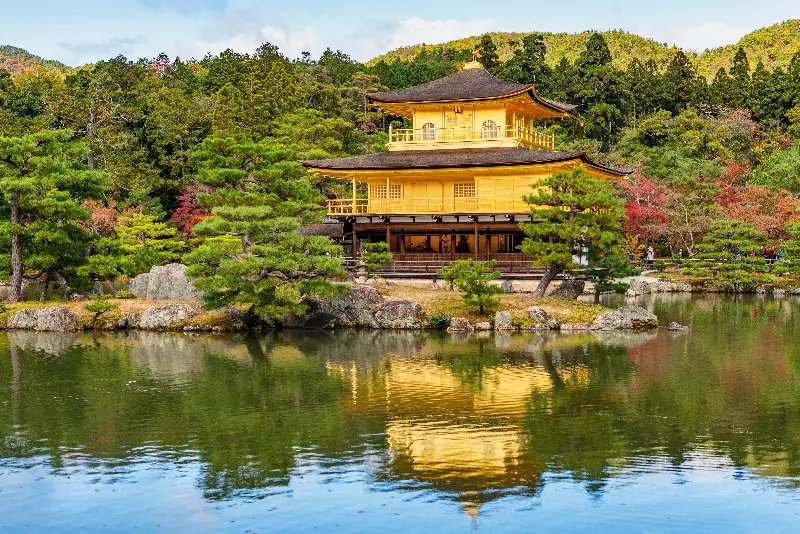
A Pavilion Born of Ambition and Artistry
The origins of Kinkaku-ji trace back to the late 14th century, during Japan’s Muromachi period. The illustrious shogun Ashikaga Yoshimitsu, seeking solace from politics and a space for refined culture, acquired the site and commissioned the villa that would become the Golden Pavilion. His vision was anything but ordinary. Embracing the aesthetics of “kitayama culture” that flourished among Kyoto’s elite, he desired a residence and retreat that blended aristocratic luxury with Zen serenity.
Kinkaku-ji’s three storeys each embody a unique architectural style. The first floor, called The Chamber of Dharma Waters, features simple wooden pillars and white plaster walls—a nod to samurai homes. The second floor, The Tower of Sound Waves, takes on a more aristocratic look inspired by the residences of court nobles. The third floor, The Cupola of the Ultimate, is strikingly Zen, echoing the shapes of Chinese temples and capped by a golden phoenix weather vane. This progression upwards is more than a visual treat—it symbolises the journey from the worldly to the spiritual, a reflection of both the shogun’s ambitions and the values of his times.
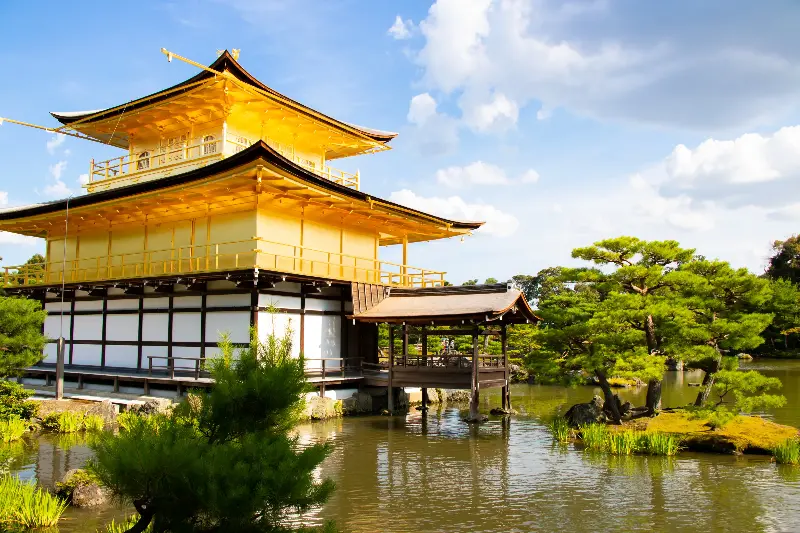
Layers of Gold and Symbolism
Perhaps most enchanting about Kinkaku-ji is its notorious gold leaf finish, which covers the upper two floors. Surprisingly, the original 15th-century pavilion may have featured only modest gilding, as gold was rare and costly. Following its destruction by fire in 1950—an act that shocked all of Japan—the structure was carefully reconstructed and extensively gilded in pure gold leaf, elevating its radiance beyond all former splendour.
But the gold is more than decorative dazzle. In Buddhist thought, gold represents the purification of negative energies, spiritual awakening, and the imperishable nature of truth. By wrapping the temple in gold, it’s believed the pavilion embodies paradise on Earth—a heavenly realm reflected in the jewel-like pond below. On sunny days, the sight is particularly spellbinding, with the gold and water merging to create an ethereal glow that lingers in memory and lens alike.
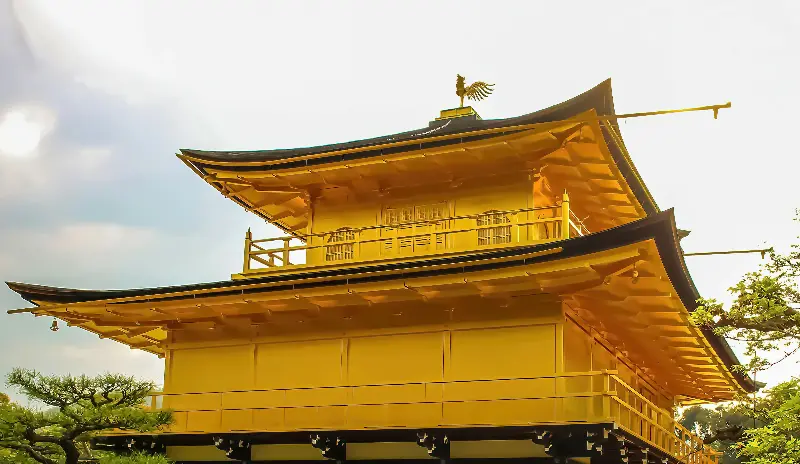
Legends, Phoenixes, and the Fire of Rebirth
No monument as iconic as Kinkaku-ji exists without legends swirling around its golden eaves. Atop the pavilion sits a striking golden phoenix, a mythical bird symbolic of rebirth, immortality, and the cyclical renewal of nature and spirit. This motif seems especially significant considering the Golden Pavilion's phoenix-like story.
On 2 July 1950, the pavilion was tragically burned to the ground by a novice monk—a shocking event that inspired Yukio Mishima’s famous novel “The Temple of the Golden Pavilion.” Yet, from these ashes, the community and master craftsmen came together, honouring centuries-old traditions to reconstruct the temple by 1955. The increased use of gold on the new structure was a statement: resilience, beauty, and cultural legacy would outshine adversity.
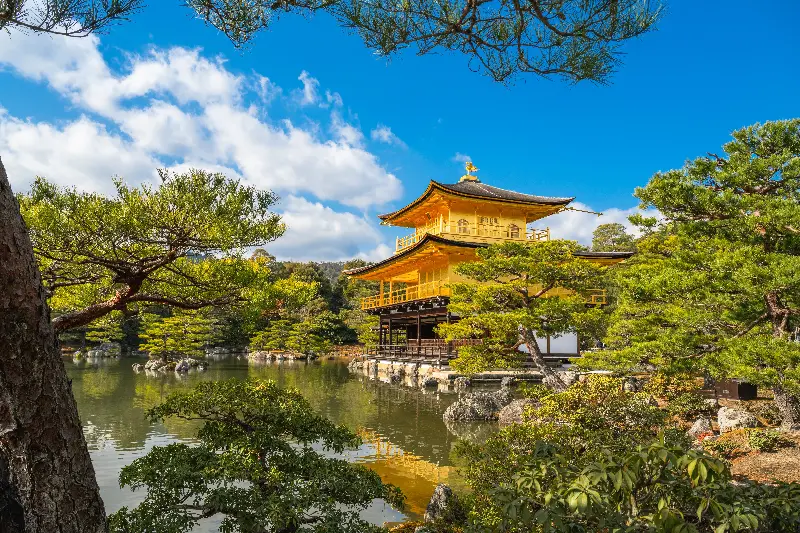
Gardens of Reflection and Tranquillity
Surrounding the radiant pavilion is an exquisite strolling garden, designed to enhance the feeling of harmony between man, nature, and the heavens. The pond—Kyoko-chi, or Mirror Pond—is carefully placed to envelope the pavilion in shimmering reflections, amplifying its brilliance while connecting it to its natural surroundings.
Stone islands dot the pond, some said to symbolise sacred cranes and turtles—common motifs for longevity and happiness in Japanese culture. Winding paths, pine trees, and teahouses invite visitors to slow down and immerse themselves in the Zen atmosphere, reinforcing Kinkaku-ji’s role as both a feast for the eyes and balm for the soul.
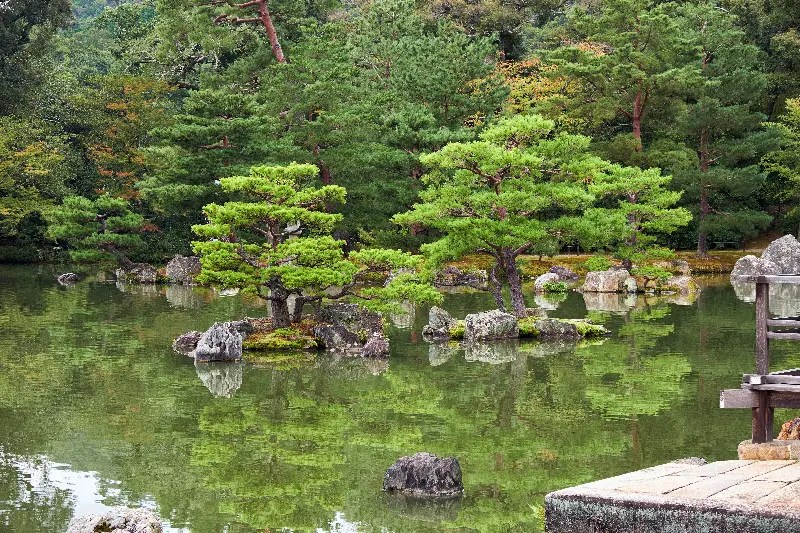
A Living Treasure of Culture and Inspiration
Today, Kinkaku-ji is designated as a UNESCO World Heritage Site and attracts more than five million visitors each year. Its image inspires everything from paintings and poetry to international travel posters. Yet, for all its global fame, the Golden Pavilion still manages to feel intimate and alive—remaining, at heart, a place of personal reflection and wonder.
Every detail, from the glinting phoenix to the perfume of moss in its gardens, tells a story of resilience, artistry, and philosophical depth. The shine, therefore, is not merely a matter of gold leaf and sunlight, but a living brilliance born from centuries of human aspiration.
Step onto the mossy paths, pause at the edge of Mirror Pond, and let the Golden Pavilion’s radiance reveal not only Kyoto’s rich past, but a hopeful glimmer for all who seek beauty and meaning on their journey.
